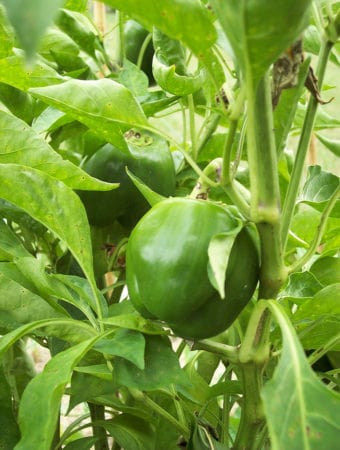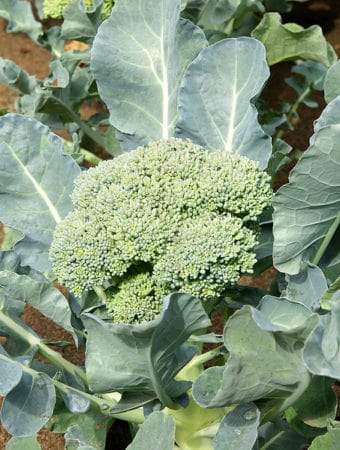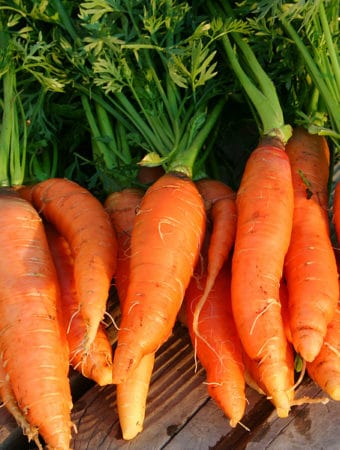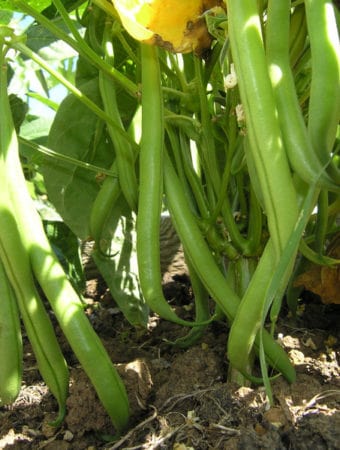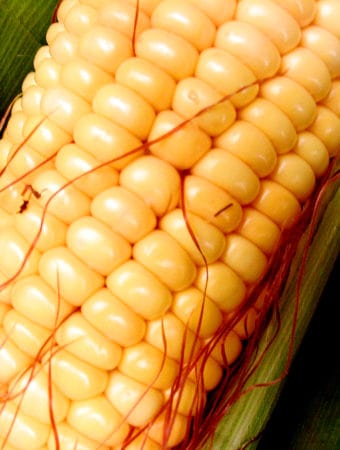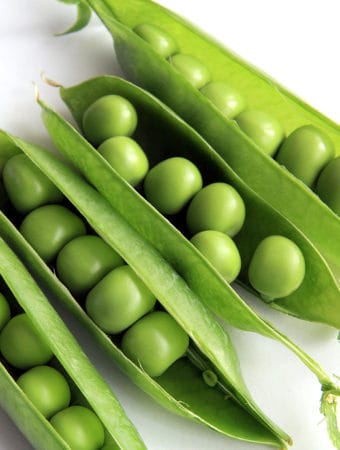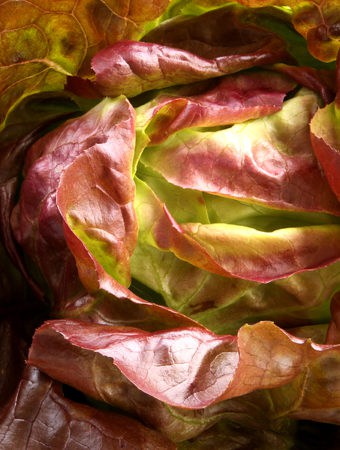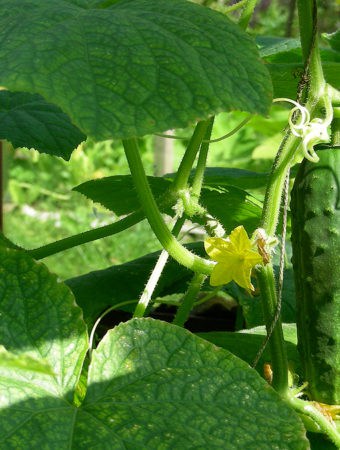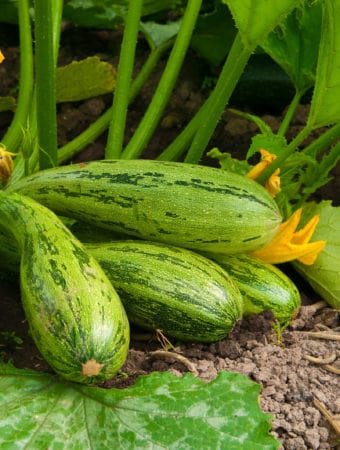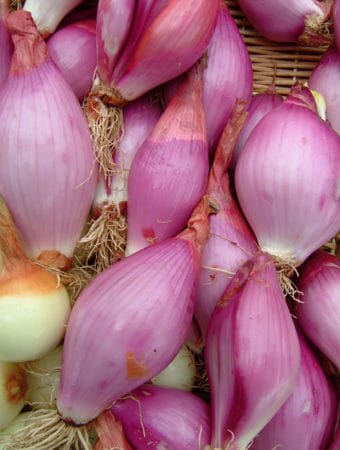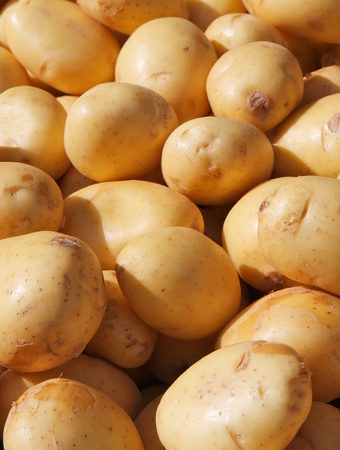Dill is an annual herb that is easy to grow. Dill’s delicate leaves are feathery. Mature plants flower in late summer. Flowers are followed by seeds. Dill leaves, flowers, and seeds can be used in the kitchen. Dill leaves are an herb. Dill seeds are a spice.
Dill grows well in full sun or partial shade. Dill is a cool-weather herb and will bolt (go to seed) in hot weather.
Dill is native to the Mediterranean region and western Asia and is used often in Mediterranean, European, and Asian cooking.
Here’s your complete guide to growing dill!
Where to plant dill
- Plant dill in full sun–6 to 8 hours each day. Dill will tolerate light shade but will not grow as bushy.
- Dill grows best in well-drained soil rich in organic matter. Add aged compost to the planting bed in advance of planting.
- Dill prefers slightly acidic soil pH of 5.5 to 6.7.
- Dill flowers attract pollinators–especially honey bees. Plant dill near the edges of the garden to bring pollinators in.
- Dill’s slender stems can grow to 4 feet tall; mature plants can be used as a flowering border or hedge around the vegetable garden.
Related articles:
- How to Grow Herbs
- How to Start an Herb Garden
- Best Herbs for Container Growing
- Herbs for Cool Season Growing
- Grow 20 Herbs for Cooking
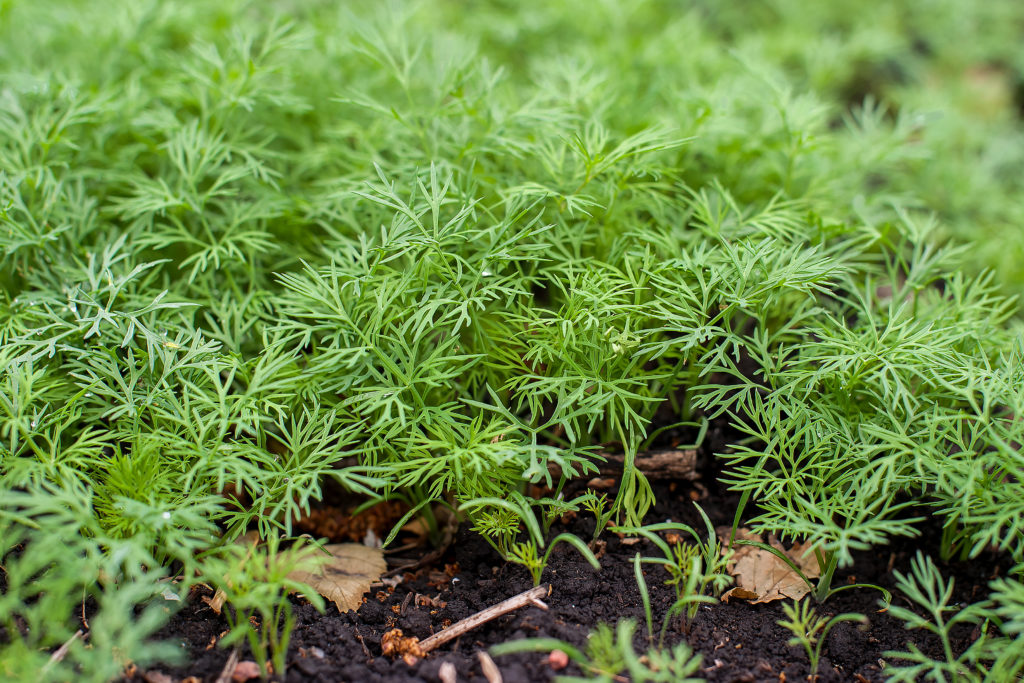
When to plant dill
Seed starting dill indoors
- Dill seed can be started indoors 4 to 6 weeks before transplanting to the garden.
- Germination will occur in 10 to 14 days at an optimal soil temperature of 60° to 70ºF.
- Grow young seedlings indoors under grow lamps or in a bright window.
- Seedlings form taproots that transplant poorly so transplant young plants into the garden before they grow to 6 inches high.
Seed starting dill outdoors
- Sow dill seed directly in the garden after the danger of frost has passed.
- Sow seed in rows or 5-inch bands.
- Dill will reseed itself readily so plant it where you can allow it to grow for several years.
- Sow successive crops of dill every 3 to 4 weeks for a continuous fresh harvest.
Planting dill for autumn harvest
- Start dill in mid to late summer indoors.
- Transplant young plants into the garden so that they mature in the cool weather of autumn.
How to plant dill
- Planting depth: Direct sow seed in shallow trenches ¼ deep and 3 inches apart. You can also simply press seeds into the soil with no cover; light will help seeds germinate. Once seedlings grow to about 6 inches tall, thin successful seedlings from 8 to 12 inches apart. Thinnings are edible.
- Spacing: Space dill plants 10 to 12 inches apart. Space rows 2 to 3 feet apart. Dill is often grown in clumps, not rows.
- How much to plant: Grow 10 dill plants over the course of the season for cooking and culinary use; sow several successions two weeks apart.
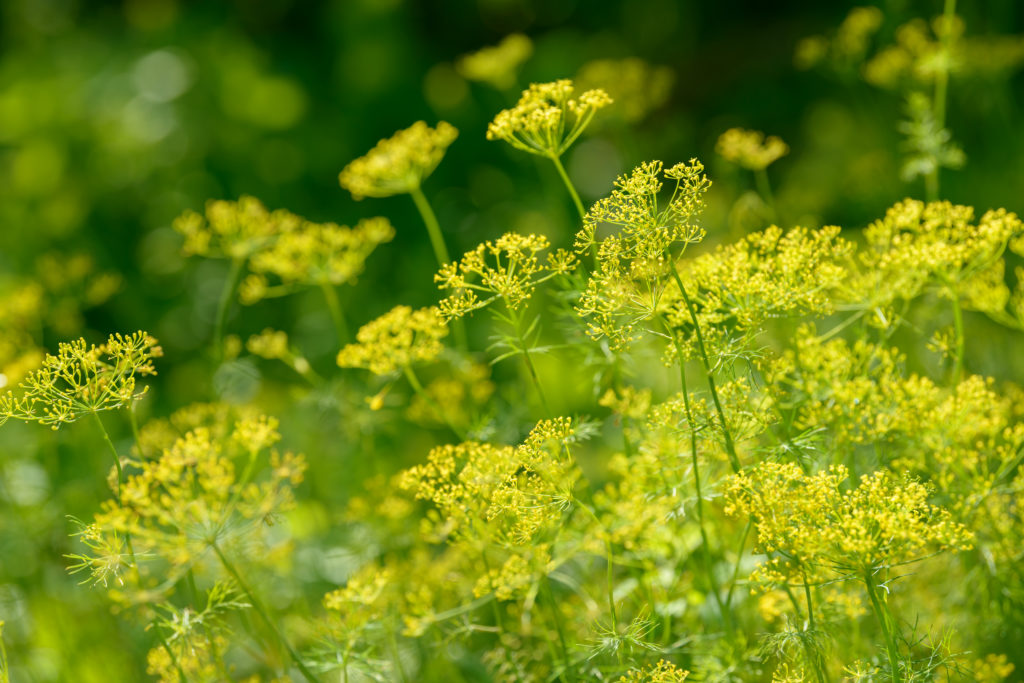
Dill companion plants
- Dill is a good companion for asparagus, corn, cucumbers, onion, lettuce, and vegetables in the cabbage family including Brussels sprouts, kohlrabi, and broccoli. Dill improves the growth of cabbage family crops.
- Plant dill with tomatoes, chilies, sweet peppers, strawberries, and thyme.
- Do not plant dill near carrots or fennel it will hybridize.
- Dill is a good companion for basil.
- Dill attracts honeybees and beneficial insects to the garden.
- Dill can be used as a trap crop for tomato hornworms. Dill attracts the caterpillars that turn into black swallowtail butterflies.
- The aroma of dill is said to repel aphids and spider mites.
Watering dill
- Water dill evenly and regularly until established. Once established dill will grow best if the soil is allowed to nearly dry between waterings.
- Dill should not be overwatered. There is a risk of rot if dill is overwatered.
- Mature dill plants are drought tolerant.
- Where the soil is heavy with clay, plant dill in a raised bed or in containers.
Feeding dill
- Prepare planting beds with aged compost.
- Side dress dill two or three times during the growing season with compost tea or comfrey tea
- You can fertilize dill with a balanced fertilizer, but it is not necessary.
Dill care and maintenance
- Keep the planting bed well-weeded; weeds compete for nutrients and water
- Dill can grow tall and wispy; it may benefit from staking in gardens with a prevailing wind or where an occasional high wind blows.
- Keep planting beds weed-free; weeds compete for moisture and nutrients.
- Pinch out early flowers for prolonged leaf growth.
Container growing dill
- Dill will grow easily in a container. Choose a container at least 12 inches deep as dill forms a taproot.
- To plant dill, fill a container with potting soil.
- Sow the seeds in the soil and cover them with a thin layer of soil.
- Water the seeds and keep the soil moist until they germinate. Dill plants should be spaced about 12 inches apart.
- Dill plants grow best in full sun. They will need regular watering, especially during hot weather. Harvest the dill leaves as needed.
Winter growing dill indoors
- Dill can be grown indoors in winter. Outdoors dill will likely die back to the ground after the first hard freeze.
- For indoor container growing dill in winter, space plants 6 to 8 inches apart.
- Dill grown indoors can be set outdoors after the last frost in spring.
Dill pests
- Dill may be attacked by parsley caterpillars and tomato hornworms; handpick pests off the plant. Spray with Bacillus thuringiensis kurstaki to be rid of these pests.
- Aphids can colonize dill; inspect plants regularly and knock them off with a strong stream of water. Parasitic wasps, green lacewings, hoverflies, and ladybugs are beneficial insects that eat aphids.
- Black swallowtail caterpillars (which turn into black swallowtail butterflies) eat dill leaves.
- Root-knot nematodes can attack dill causing leaves to yellow and plants to become stunted. Solarize the soil to kill pest nematodes. You can also plant calendulas which repel nematodes.
Dill diseases
- Dill has no serious disease problems.
- Dill is susceptible to diseases that attack other carrot-family plants including carrot motley dwarf, carrot redleaf virus, carrot mottle virus, damping off, downy mildew, powdery milled, and root rot.
- Avoid watering dill overhead; this can lead to fungal diseases. Water at the base of plants.
- Space dill plants at least 12 inches apart to ensure good air circulation.
How to harvest dill
- Snip fresh dill leaves as needed during the growing season after plants have reached 12. inches tall or more.
- Cut off the new leaves of sprigs as needed
- Cut leaves or stems with a garden snip or pair of scissors.
- Dill leaves have the best flavor just before flowers open, about 70 days after sowing.
- The dill seed head is ready for harvest about 90 days after sowing when seeds are flat and brown; harvest seeds when they are ripe but before they fall to the ground.
- Hang each seed head in a paper bag so the seeds drop into the bag.
- If you harvest seed heads before they turn brown, the plant will make new flower heads.
Dill in the kitchen
Dill is both a culinary herb and a spice. Dill can be used fresh or dried. Dill leaves are milder than dill seeds.
Dill leaves
- Feathery dill leaves are harvested to use as an herb. The feathery green leaves are often called dill weed.
- Fresh dill leaves have a buttery green flavor with a hint of citrus; seeds are strong-flavored, slightly bitter-tasting similar to caraway.
- Dill weed leaves are used to flavor many dishes including salads, vegetables, meats, fish dishes, sauces, and salad dressings.
- Use fresh dill leaves in salads and as garnishes. When mincing dill, preserve the delicate flavor by snipping with scissors rather than slicing with a knife.
- Use fresh new leaves or dry dill leaves or sprigs with lamb, pork, poultry, cheese, cream, eggs, cabbage, onions, cauliflower, parsnips, squash, eggplant, spinach, potatoes, broccoli, turnips, cucumbers, carrots, green beans, tomatoes, avocadoes, eggs, and apples.
- Add fresh dill leaves to salads, soups, and sauces. Use leaves to flavor vinegar and pickles. Fresh dill leaves lose their fragrance when heated so add them at the very end of cooking. Dried leaves are known as dillweed.
Dill flowers
- Yellow dill flowers can be used as you would use leaves.
Dill seeds
- Dill seeds are used whole or ground in longer-cooking recipes
- The small hard, dried seeds are used as a spice.
- Dill seed is used to flavor bread, pickles, sauerkraut, and coleslaw.
- Add dill seeds to homemade bread.
- Use fresh or dried seeds in salad dressing, sauces, stews, butter and cheese spreads, and egg dishes.
- Heating brings out the flavor of dill seed which is stronger than the leaves.
- Dill seeds are the main flavoring agent in dill pickles.
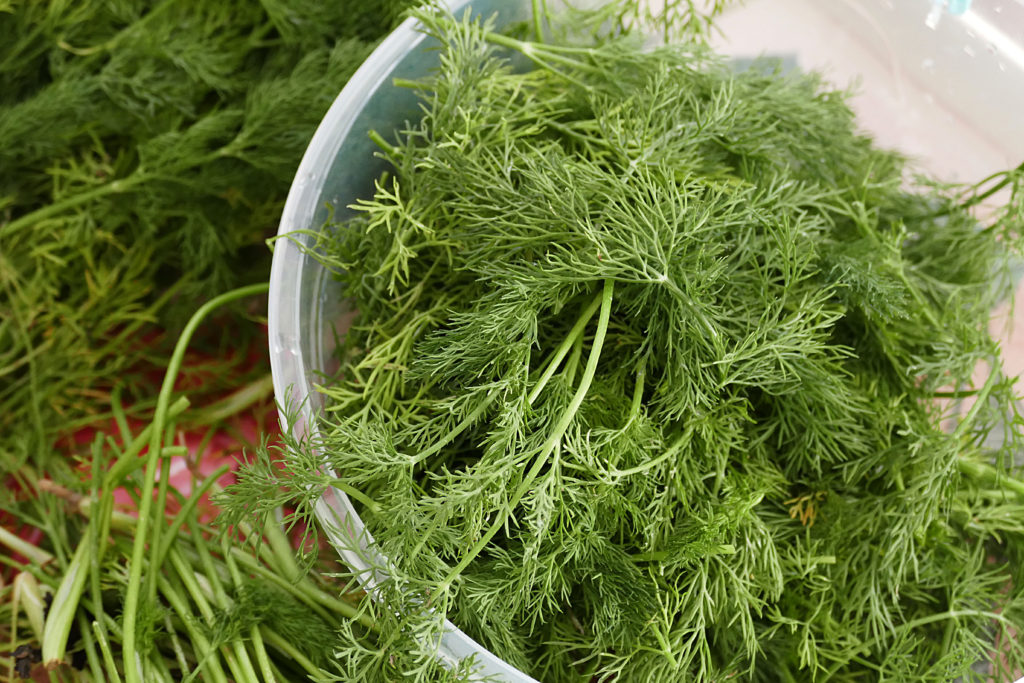
Preserving and storing dill
- Refrigeration: Leaves will keep in the crisper for a couple of days folded into a damp paper towel and placed in a plastic bag
- Drying: To harvest and dry seeds, collect bunches of flower heads before the seeds fully dry, shatter, and fall to the ground. Hang flower heads upside down in a paper bag to dry. Dry seeds will fall into the bag. Seeds are ripe a few weeks after the flowers bloom. Dill leaves and seeds can also be dried in a dehydrator.
- Freezing: Fresh leaves can be frozen. Freeze leaves chopped or whole. For best flavor freeze leaves right after harvest. Freeze stems whole; later snip off frozen leaves with scissors as needed and return the rest to the freezer. Store dill leaves in freezer bags. You can also freeze fresh dill leaves in butter or vinegar.
- Storing: Dry dill leaves can be stored in an airtight container. Dried dill seed will keep in an airtight container.
Dill propagation
- Dill easily self-sows. Plant dill where it can remain for several years. Volunteers commonly appear where seeds drop.
- Seeds may not be produced until the plant’s second year; if plants are set out in early spring you may get seeds the first year.
Dill frequently asked questions
Q. How quickly does dill grow?
A. Dill is a fast-growing annual. It will mature in about 70 days.
Q. When is the best time to plant dill in the garden?
A. Sow dill seeds in early spring in well-prepared soil. Sow dill where the plants are to stand.
Q. How far apart should I plant dill plants?
A. Space dill plants 1 to 2 feet apart. Dill is a good-sized bush that grows to about 3 feet tall.
Dill varieties to grow
- ‘Bouquet’ is a popular dill variety. This variety grows 24 to 36 inches tall with an 8-inch spread. It produces many seeds.
- ‘Elephant’ grows 30 to 48 inches tall and to 24 inches wide; matures in 60 to 90 days.
- ‘Hera’ grows to 24 inches tall and produces bunches of fragrant foliate; it is slow to bolt.
- ‘Fernleaf’ is a dwarf variety suited for container growing.
- ‘Superdukat’ is intensely flavored.
Get to know dill
- Botanical name and family: Anethum graveolens (Umbellifer/Apiaceae—parsley family); other members of this family include fennel, caraway, parsley, anise, and cilantro.
- Origin: Southeast Asia; the word dill comes from the Greek word for “strong smelling”
- Type of plant: Dill is a biennial herb often grown as an annual.
- Growing season: Spring through fall; dill is best grown in springtime.
- Growing zones: Zones 3 to 11; dill grows best outdoors in Mediterranean regions
- Hardiness: Dill tolerates cold and heat; mature plants are hardy to 25ºF.
- Plant form and size: Dill is a bushy plant with feathery foliage that grows 2 to 4 feet tall and half as wide; each plant grows a single hollow stem with umbrella-shaped flower heads.
- Flowers: Dill has small greenish-yellow flowers that bloom on flat-topped clusters or umbels about 6 inches across; seeds ripen in early autumn. Dill looks much like fennel.
- Bloom time: Mid-summer to autumn
- Leaves: Finely-cut, feathery blue-green leaves similar to fennel but shorter and smaller atop hollow stems with green and white stripes.
- Seeds: Dill seeds are flat, oval, and light-brown; seeds follow the blossoms.
Also of interest:
- Anise
- Anise Hyssop
- Arugula
- Basil
- Bay
- Bee Balm
- Borage
- Calendula
- Caraway
- Catnip
- Chamomile
- Chervil
- Chives
- Cilantro-Coriander
- Clary
- Costmary
- Cress
- Dill
- Fennel, Sweet
- Horseradish
- Hyssop
- Lavender
- Lemon Balm
- Lemon Verbena
- Lovage
- Marjoram
- Mint
- Nasturtium
- Oregano
- Parsley
- Perilla
- Rosemary
- Sage
- Salad Burnet
- Savory
- Scented Geranium
- Shiso
- Sorrel
- Stevia
- Sweet Cicely
- Tarragon
- Thyme
Related articles:
Best Herbs for Container Growing
Planning the Home Fruit Garden
Garden Planning Books at Amazon:
- Vegetable Garden Almanac & Planner
- Kitchen Garden Grower’s Guide Vegetable Encyclopedia
- Vegetable Garden Grower’s Guide
- Tomato Grower’s Answer Book



